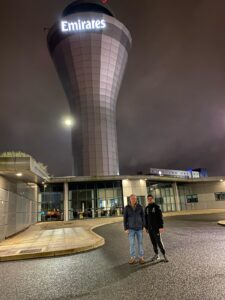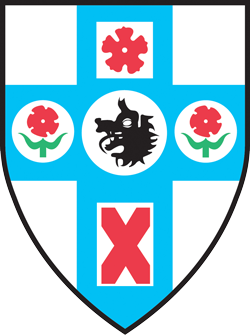Recently, Ryun, a member of our sixth form, was given a tour of Birmingham Airport’s Air Traffic Control. He told us about his experience:
“I was invited to take a tour if the air traffic control tower at Birmingham airport. This consisted of two primary areas and was led by the air traffic control supervisor.
Firstly I was escorted upstairs to the main air traffic control room which is known as having the ‘eyes’ on the whole airport and this is where flights are essentially managed within the airport. Initial scene outside from the view of the wall to ceiling windows was the breakdown of the different components of the airport, various taxiways, the single runway, concourse and the numerous light configurations and their roles as well as the airport building and gates itself.
I was able to see incoming flights approaching the airport for landing, those manoeuvring on the taxiways and those departing along the runway. During this time I was advised that any conversations were conducted as quietly as possible as ongoing communication from the air traffic controllers to pilots could be heard and should not be interrupted with background noise.
I also noticed the distant ambience of the control room, very quiet and dimly lit with light emanating from the numerous screens and displays. This was all to help the controllers see clearly outside as well as the computer screens. Each controller had various screens to help them perform their job, screens containing a real time map of the airside with moving planes and vehicles, screens to show the weather, air temperature and wind direction from both bottom and the top of the runway and then others that showed incoming and outgoing flights with their call signs and altitude.
The supervisor told me the importance of the wind direction as that determines the direction of flights taking off as planes need the wind against them to provide uplift on the wings, this essentially allows planes to get airborne. Weather is also important as low visibility impacts the pilots sight as well as air traffic control therefore reliance on computer systems are shown as strips that move to different section depending on the stage of teh flight and turning the light in the air traffic control room, showing the numerous aircraft and their sirspeed, groundspeed, altitude from sea level and the altitude from the airport.
The supervisor also told me that another important factor controllers’ have to take into account is that they need to create gaps between planes taking off as the plane in front creates an airflow behind it that affects the next plane departing with the rule being approximately a 2 mile gap and larger for bigger aircraft.
We then made our way downstairs to the radar room where a separate team controlled flights within the UK controlled airspace outside of the airport and they hand off flights once a plane leaves the area under Birmingham airport control. This work was entirely based on relying on computer screens and the room has no windows as eye visibility outside is not needed. The displays of which some were similar to those upstairs in the control room with the main difference being flights outside the airport location shown on maps of a larger radius. The radar controller like the air traffic controller had headsets on to communicate with other airports and pilots.
Following on from the tour I was given a brief description on the requirements and training for a controllers’ role. There are no entry requirements for having A Levels or a degree but each successful candidate has to pass several key aptitude tests as well as a medical. Specific to Birmingham airport the training is undertaken at a college in Gloucester and is a combination of day release as well as periods of full time education and then on the job training. Training can run to 18 months which will get you to an assistant level controller and then on the job training for a further period before you become a controller. There is also the possibility to pay for your own training and then seek work or join the NAT’s program which is the UK’s nationwide air traffic controllers governing body that undertakes courses and training.
Something important that a successful candidate needs to demonstrate is that they can adapt to different circumstances with logical solutions while maintaining a clear and concise approach as each problem is not always something that can be practiced or read up about. This is where the initial aptitude test tries to identify suitable candidates. As this is an extremely high pressure role, you cannot work for more than 4 hours in one stint and it is mandatory they have breaks away from the work control room during a typical shift. Additionally as airports operate 24/7 the controllers have to work shift patterns. once a controller has completed their training they are given a controller’s licence which has to be renewed each year along with a medical pass.”



